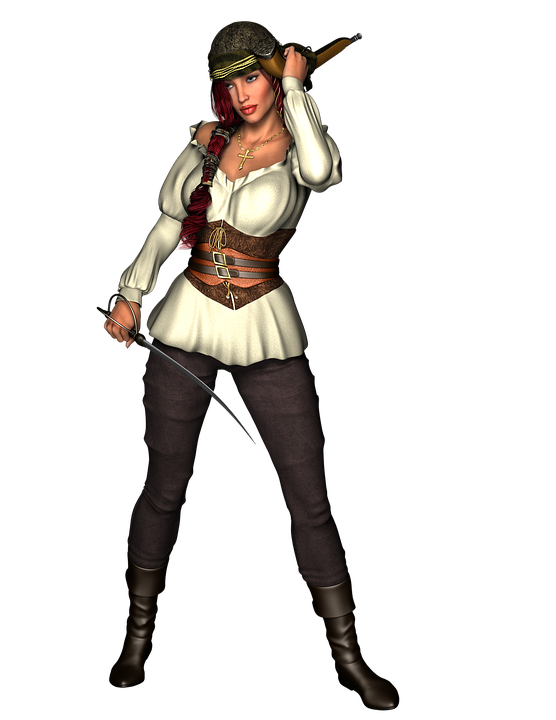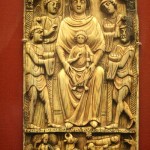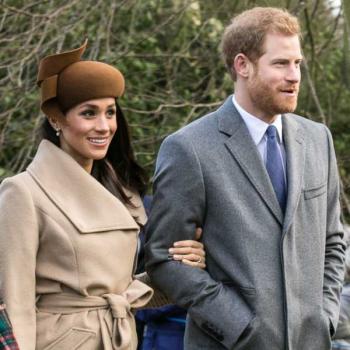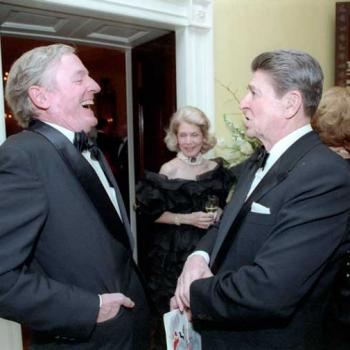I’ve been a Star Wars geek for nearly as long as I can remember. Even before I had a chance to see the movies, in my Luddite childhood, the stories crept into our shared juvenile mythos, so I was having light-saber battles in the woods before I’d ever seen a light saber on the screen. Later, I saw the movies, and kept having light-saber battles well into my teens. I’m not saying I still pretend to be in Jedi training….but, I’m not saying I don’t, either. It’s a story that sticks. Having the franchise resurrected, meeting my favorite old characters again, made this all the more poignant. I felt very much as Jessica Mesman Griffith describe, on seeing our beloved characters grown old:
Meanwhile, I’d felt a strange joy in seeing these beloved characters aged and transformed. I could imagine all too well how the years of guilt and solitude might have made Luke quiet and etched his face with scars and pain. How Han’s failings made him buffoonish and maudlin, less cocky, if no less sarcastic. And, especially, how Leia might have grown cold and imperious and reserved, even stilted, in her speech and manner.
There are many reasons why the Star Wars epic appeals to the modern and post-modern imagination: one could in fact say that it is the closest thing we have to a national epic, and like any good national epic (the Aeneid, for instance) – it is critical of our national mores. And it invites us to consider the intersection of the personal with the political, introducing us to memorable characters who become, sometimes, more real to us than people we see in “real” life.
For mysterious reasons I always had a thing for Luke, not Han, even though typically I love the outlaw. I think it was because I actually saw Jedi first, where he comes into his own, and is dressed all in black, and experiencing deep inner conflict, and has these extraordinary mental powers. In one of my fantasy side-lives, I was romantically involved (in a very Jedi emo way) with Luke. As a bonus, this meant friendship with his awesome sister.
I never pretended to be Leia (because then I couldn’t be with Luke, unless you want to run with the incest thing, which I don’t). I liked Leia, though, as I rarely liked the heroines presented to me in film or TV show. She was someone I admired, and imagined myself being friends with. I can look back, now, on my experience as a teenage geek, and realize how rare it was for me to run into female characters in film who didn’t annoy me, or make me feel that I needed to focus on being prettier and skinnier and have bigger boobs. In Leia’s world, I had to focus on being courageous, and smart. As a bookish, geeky girl who was often rounding up cattle and getting bucked off horses, I felt I could do this far better than I could be gorgeous and sexy. Even though I wanted to be gorgeous and sexy, too – because that’s what just about every other story was telling me I had to be.
Later on, I got to know more about the actor who played Leia. I learned to admire Carrie Fisher not only because she’d given me this wonderful female friend, in my youth, but because she spoke up so honestly and wittily about her own struggles. Which, of course, in the stories, women aren’t allowed to have: the agon, the inner torment, the temptations to self-destruction, are all for the men. As one who has come through the dark night of addiction myself, I applauded Fisher’s openness about her experiences. Her recent, sudden death was a sad loss to her family, but also to the many women who have followed her story, through brokenness to healing. It’s hard, maybe, for some of us to separate “Carrie Fisher as Leia” and what this meant for us, in our youth, to “Carrie Fisher the real” who spoke out about things that many of us have kept hidden. Seeing her as General Organa in The Force Awakens only solidified this: here she was, back again, not trying to look young and sexy, but carrying herself with the mingled strength and exhaustion of a woman who has seen decades of personal and political upheaval, and shouldered on. She didn’t play the character “badass.” She didn’t come sweeping in. She kept it real.
Some male critics complained about her appearance, of course, I guess because it didn’t fit their narrow imaginings of what women can be. This shows that we still have a long way to go.
Still, we HAVE come a long way in our portrayal of female characters in television, film, and story. Much to the dismay of the defenders of patriarchy, the effect of smart feminist voices in art and entertainment and activism has been to pull the female protagonist out of the realm of feminine mystique and into fleshly reality. We have the Bechdel test for movies:
- The movie has to have at least two women in it
- who talk to each other,
- about something besides a man.
I keep this in mind while writing fiction, myself, but I also recognize it is a bare minimum. Most of the Star Wars movies don’t even pass the Bechdel test, but they should get extra credit on the feminist scale for having Leia, who, even if she is forced into a skimpy bikini by a licentious sand-slug, as soon as she’s out of it gets back into a practical, comfortable outfit for running around in the woods.
I loved The Force Awakens and Rogue One, and was shaken by both of them – but also had this nagging feeling about both. After pondering a bit, I realized it wasn’t a nagging feeling about the Star Wars story – it was about movies in general. We may have women who are not in it for the romance, women who are smart strong leaders, women who have interiority, women who refuse to be objects, women who struggle with questions of good and evil, and won’t be bossed. But across the board they have one thing in common: they only get to be protagonists if they are young and good looking.
I just finished reading the Cormoran Strike detective series, by J.K. Rowling under the pseudonym of Robert Galbraith. As with all things that JKR does, they are excellent. I love the burly, shaggy, one-legged detective hero (with the exception of Luke, all my favorite fictional males have been shaggy, dark, dangerous, uncouth, or forbidding in some way)
. One of the stories deals with Body Integrity Identity Disorder, the desire of a healthy person to have a limb removed – and also acrotomophilia, the phenomenon of sexual desire for amputees. I considered the fact that two of my fantasy males, Luke Skywalker and Mr. Rochester, have their hands cut off. I also love the Hound, who is horribly scarred, in A Song of Ice and Fire. I don’t think I have acrotomophilia. I do think, however, that women may write about cutting off the limb of a man, as a form of revenge fantasy. Bronte certainly enacted her revenge against males, in her treatment of Rochester. On top of this, scarring on men is considered attractive, in a way that it is not on women. Some of us like the idea that a man is not a sheltered innocent – maybe because then he’ll be less shocked to find that we aren’t, either?
But scarring, age, ravagement, disfigurement, disability, weight gain, etc, are not typically viewed as acceptable for women. Cormoran Strike is not physically attractive; he is sloppy and overweight as well as being one-legged; but he has hot girlfriends, and fans all look forward to getting him together with his physically attractive (also smart, and independent, and brave) assistant, Robin.
What if the situation were reversed? What if we had an overweight woman with a disfigurement, and poor domestic habits? Would it be considered normal for her to have a lot of attractive male lovers? Would we be fantasizing about putting her together with a handsome, slender younger man? No. But maybe we should. Or, we could make her the central character even if she has no love interests.
While it is the norm to portray not-conventionally-attractive men paired up with beautiful younger women, the reverse is not typically accepted by an audience that has accepted certain sexist, looksist, and ableist precepts. Witness the gossip that Hugh Jackman must be gay because he’s happily married to a talented, normal-looking woman fifteen years his senior. It happens in the reverse ALL THE TIME and no one bats an eyelash. Of course, the fact that so many stories are told by men not themselves on a Hugh Jackman level of appearance might have something to do with it. But why are they allowed to wallow in their fantasies of being desirable to gorgeous younger women, while a woman in the same situation would be laughed at for doing so?
I’d like to propose a new test for movies, TV, and stories.
There needs to be at least one female character who is older or not conventionally attractive.
She needs to be presented not as a sidekick, or for comedy, but as a protagonist in her own right.
While romance is not necessary to a woman’s story, the older or not conventionally attractive woman should not be denied a romantic or sexual plotline on the basis of age or appearance.
This plotline should not be presented simply as ludicrous comic relief.
Off the top of my head, I give all the points to George R. R. Martin for his portrayal of Brienne of Tarth. But we need more such characters. Let’s hold our story-tellers to a higher feminist standard.
Leia would approve.
image credit:
https://pixabay.com/p-1489182/?no_redirect













